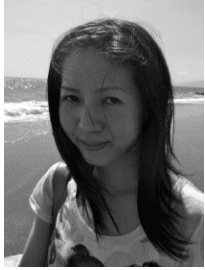
As a prose writer, I depend on poetry to wake me up, slow me down, and get me thinking about the music of language. I respect poetry for its images and sounds, and while it is not my medium of expression, I find reading poetry to be restorative and rejuvenating. Yet what I don’t expect from the genre—and what Jennifer S. Cheng’s House A provides—is a gripping narrative.
A poetry collection constructed from three disparate yet harmonious parts, House A concerns itself with identity-building, diaspora, and the physical act of building a home and an immigrant family on foreign soil. Yet while these are familiar themes, Cheng defamiliarizes them for the reader through her refractory poems that have the effect of a kaleidoscope, dividing experiences into tiny crystalline slivers and re-assembling them to illustrate the unexpected colors and shapes that lie buried within everyday domestic life.
In the first section, “Letters to Mao,” we hear the clear voice of a first-person speaker anchoring us to a specific point of view. Yet lest we take the voice too literally, Cheng traverses time and space in prose poems that gently defy our expectations of historical personal narratives and interrogate the epistolary form even as they echo it. Her poems accrue with the steady precision of bricks laying the foundation both of the “home” in question and of the book:
Dear Mao,
To say your name plainly, as if you were a man of History I knew so well. My uncle as a twenty-year-old in prison, whispering, only it wasn’t a whisper but a drunken fury, They’re trading children, do you understand? Everyone is starving. I have no way of knowing if what he said is true, so why should history be so unreliable was what I asked myself. You in your stone peasant house by the wet fields. You attending primary school with the other village children. You running away at age eleven, believing the next town over was only footsteps away. You were dust in my house. A shadow underneath the floorboards.
By addressing him directly, the speaker makes Mao a specter in the book—both god and mortal man, both question and answer about how history originates. Writing to Mao is a means of confronting the forces of history, both those that oppress and those that offer unforeseen opportunities. He is the reason why people are forced from their country and must find a new one, but he is also the spark that alights the speaker’s family in their new home. These inquiries illustrate the struggle of the speaker’s attempts to reconcile herself with her current vantage point in history, straddling two continents and cultures.
The point of view shifts in the middle section, “House A; Geometry B,” to one of more abstract interrogations. What is space? What populates a home? How do the angles of wooden rafters create a roof over a space where all of the dramas of a life play out?
If anything, this section of the book is the least narrative-driven, and injects an interesting sensation of space into the book. It acts as a sort of interlude, a taxonomical categorization of the dimensions of a home, of the anatomy of a family, and de-familiarizes us yet again from these spaces that we have learned to take for granted. For example:
X
suppose an attic is where the history of a
past is stored away. in the absence of a
partition, this house is everywhere the
angle of that apex, spread as an
umbrella, a roof in the truest sense.
let us define nostalgia, then, not as a
remembrance but a feeling, familial,
that is on a precipice, vulnerable to the
winds, drifting and swelling for a nest.

In my opinion the final section, “How to Build an American Home,” is the most successful, because it is also the most expansive. If the first two sections form the foundation and framework of the book, this section expands both the narrative perspective and the thematic reach—extending it beyond the confines of a single structure to encompass an omniscient exploration of what it takes to build not one but several homes over the course of a lifetime.
The poems in the final section have the most variety in subject matter and tone, and are set off by haunting and beautiful images that interrogate the reader’s own understanding of what a home and a family is. Here’s one excerpt:
heisenberg uncertainty principle:
No one told me how to mark the gaps between us, how to
compensate for them in the first place.
_______________No one told me that if I left, there would always
_______________be a reason to return.
The poems in this section really made me think, as a prose writer, about how poetry can blow open our understandings of how narrative is constructed. I read this book obsessively, like I would devour a great thriller or a decadent meal of language. It made me think about how an economy of language demands that the reader enter the spaces left by writing with their own imaginative leaps. Through this collage of tightly hewn images, anecdotal gestures, and the suspension of engrossing narrative tension, Cheng has constructed a poetic narrative that is as powerful as it is sparse. The success of Cheng’s book lies in its ability to render those ephemeral moments that exist solely in the negative space of what remains unsaid.




